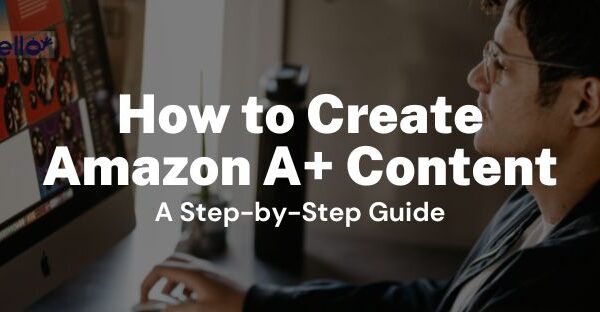Amazon is a competitive marketplace with the greatest market share in the eCommerce business in North America. It’s difficult to succeed in the ever-increasing competition on Amazon, where more than 2 million merchants are expanding their companies. Two-thirds of major countries start their search for new items on Amazon. Because of its accuracy and personalization capabilities, the search engine is quite popular, and Amazon’s algorithm is constantly updated to present buyers with the most relevant and trusted goods in their search results. Amazon is continuously looking for methods to enhance competition and the presence of new merchants in order to spur innovation.
While advertising is one of the most important aspects of dominating on Amazon, keeping up with the Amazon A9 algorithm is another. Though it has been dubbed the A10 algorithm by some, it is quite similar to the A9 algorithm. The weighting given to particular factors, on the other hand, is a significant distinction.
Making sales on the Amazon platform is entirely based on conversion rate, and if your product is listed higher on the Amazon search result page, you’ll get more conversions. It goes without saying that if your product is on the first page, it is more likely to catch the buyer’s attention than if it is on the fifth page. To get your product to the top of the Amazon A10 Algorithm, you must be at the top of your game.
What is the Amazon A10 Algorithm?
The Amazon SEO algorithm is comparable to the Google search engine algorithm. After all, most of your buyers won’t even go past the second or third pages of search results. What’s more, did you know? Amazon is where more than 65 percent of shoppers begin their product research. As a result, if your items don’t rank highly, all of your marketing and product optimization efforts will be for naught.
The most recent version of Amazon’s search and ranking algorithm is the A10 algorithm. A10, which replaced Amazon’s “A9” algorithm in 2020, gives additional weight to a number of ranking parameters, making it more adept at matching consumer queries with suitable goods.
A10 was created by Amazon and is managed by them. In 2003, it started as an independent corporation called A9, which stands for “algorithm.” The firm was founded with the goal of developing search and advertising technologies. The A9 firm has been formally absorbed by Amazon (the domain redirects to Amazon.com).
It’s worth noting that the Amazon A10 algorithm has no formal documentation. The word A10 isn’t even mentioned by Amazon in any official manner. However, based on thorough testing and notes from Amazon sellers and agencies, we have specifics on how it works.
While the search algorithm is regularly changed, the transition from A9 to A10 was driven by a more major modification in 2020. Following that, we’ll look at how A10 alters the game for Amazon merchants.
Let us first understand the A9 algorithm and then focus on how the A10 is different
How the A10 differs from A9 algorithm
- The A10 Algorithm emphasises the value of good seller feedback, implying that older companies with more positive feedback would count more than fresher products.
- Sponsored links in the A9 Amazon Algorithm were capable of making a difference in raising product ranking, however this is no longer the case with the revised version. You won’t be able to obtain much success from your PPC advertisements in the A10 Algorithm if they aren’t planned and worthwhile.
- Previously, Amazon A9 gave favour to profitable goods, which tended to be listed at the top, but the A10 algorithm has prioritised relevance. Buyer search queries will be given the highest weight, and items that are 100 percent correct and relevant will be given a better ranking, even if they are not profitable.
- The Click Through Rate is another area of the A10 Algorithm where things don’t appear to be as comparable as they were in the A9 Algorithm. Relevant keywords and enticing pictures are essential for a high click-through rate. According to the A10 Algorithm, if your product’s CTR is higher, it has a better probability of being highly rated. Yes, CTR is important, but it isn’t the be-all and end-all. Amazon also looks at the conversion rate of your goods when it receives a high CTR rate.
Aside from that, Amazon has made several minor but important adjustments to how it ranks items, which you should be aware of if you want to master Amazon SEO.
Top Influencing Factors for the Amazon A10 Algorithm
1. Seller Authority
The ‘seller authority’ criterion will take into account things like Account Health, performance metrics, inventory quantity, fulfilment, and feedback score. This can help with rankings and Buy Box eligibility. Indirectly, account age and size (e.g. unified) may also matter.
Suggestion: When your product library is large, you may cater to a wider range of customers. As a result, if you’re managing things correctly and getting fantastic ratings, your seller authority will skyrocket.
The Amazon algorithm is influenced by having a huge inventory and positive ratings. It implies that you are providing high value to clients, resulting in a significant boost in your seller authority.
2. Sales History
To rank your goods in the organic results, Amazon considers your whole sales history. Products having a long history of sales rank higher in Amazon’s search results. The latest algorithm update, like the Amazon A9 algorithm, is impacted by your product sales history.
When searching on Amazon, the emphasis on sales makes it more likely that only good products will be displayed. It’s not just the product’s kind that matters, but also its Amazon history, seasonality, stock availability, and sales volume.
You should also keep enough supply of your items on hand to maintain high product rankings.
3. Impressions
Increasing your product impressions is critical since it can affect your product’s rating. Make sure the keywords you choose are appropriate, and include the most prevalent and genuine search phrases you believe a consumer would use. If your product receives more views, the Amazon A10 Algorithm is likely to improve your organic product ranking. Aside from that, increasing your views can assist you raise your conversion rate and product sales.
Rankings will be boosted by impressions from Amazon advertisements, affiliates, and partner websites. What matters most in this case is which search phrases garner the most hits. Amazon doesn’t care how many times your ad has been seen if none of those views resulted in a click.
Suggestion : Ensure that your product is relevant and put in the appropriate category while maximizing your impressions. To increase your impressions in the appropriate way, concentrate on converting keywords and optimal consumer search phrases.
4. Amazon PPC
PPC ads were one of the primary elements impacting Amazon SEO in the Amazon A9 algorithm. In the most recent version, this has changed. Though PPC advertising are still vital, the focus moved. PPC sales may provide an immediate boost in sales, but they are not one of the factors that influence your product visibility on Amazon.
Suggestion : To adjust to this recent development, continue to run your PPC ads as usual, but diversify your ad budget and focus on other components such as off-Amazon advertising, which may deliver quality traffic to your product listings.
5. Click-Through Rate
This is the number of times a product has been clicked after it has been presented in a search results page. Optimizing the main photo and title is the only method to increase CTR. The thumbnail should be clear and professional-looking in particular.
6. Organic sales
One of the major elements impacting the Amazon SEO algorithm is sales produced from the Amazon website via organic results. It is called an organic sale when a person looks for a product and purchases it from the search page results. These are the types of sales that come with having the best feedback score, product reviews, and price. The advantage of A10 is that organic sales velocity takes precedence over sales generated by PPC efforts (e.g. Sponsored ads).
7. Internal Sales
A product that is sold inside within the Amazon Platform is referred to as internal sales. Because sales generated by search results are part of organic sales, they can’t be labelled internal sales. Internal Sales refers to when a user purchases items from a frequently purchased together section. These sorts of sales can significantly improve your rating.
Internal sales indicate that these goods contributed to an increase in the average expenditure of Amazon consumers. For example, they may have gone to Amazon to buy one item and ended up purchasing another from the similar items area to their cart. Because this is extremely important to Amazon, it’s understandable that it would be emphasised in the new algorithm.
8. Off-Site Sales
In comparison to its predecessor, A10 is far more focused on off-site traffic purchases. Off-site advertisements (on social media, blogs, etc.) are three times more successful than PPC campaigns. This can help you improve your keyword ranking and receive more Amazon reviews. As a result, make sure you use non-Amazon advertising tactics such as Facebook Ads.
Amazon has raised the importance of people finding about your items elsewhere and going to the marketplace, so include them on your website, blog, message boards, and any other platforms you use.
Using Amazon A10 Algorithm to rank your products higher
We provide you with a collection of insights that will keep you up to speed on the most recent modifications to the Amazon algorithm.
- Make your product listing relevant, original, and appealing to the target market. Make sure you optimise your keywords. When it comes to keywords, make sure you employ them effectively, extensively, and intelligently. Your objective is to include as much (relevant) information as possible in your listings so that A10 can correctly match your items to purchasers’ queries.
- Take professional images that comply with Amazon’s image specifications. With CTR being one of the primary variables in A10 for improving search ranks, having good photographs will help people stop and take a second look before clicking on your item.
- Make sure you’re not spending all of your marketing money on PPC ads or giving customers incentives and discounts, as the current Amazon A10 Algorithm may limit you. Instead, vary your marketing expenditure to attract additional visitors from outside sources, or link your product to a few websites/blogs.
- It’s more important than ever to bring attention to your goods from outside Amazon, because to the increased strength of off-site sales. Facebook and Instagram ads are a terrific method to increase sales velocity, and they’re even better at helping you rank higher. Some people are put off by the expense of Facebook Ads, but it should be viewed as an investment. You’re investing money in order to improve ranks, which will lead to a significant rise in organic sales.
- Be receptive to customer feedback, since this may be a useful tool in dealing with the A10 Algorithm. Thank consumers for their positive remarks, and pay attention to and strive to resolve any issues as quickly as possible. You, as a seller, must also participate in seller forums and stay up with current trends.
- Get micro-influencers or well-known bloggers to evaluate your stuff. Redirect them to your Amazon goods. On seller forums, share your ideas and be active. The key to growing your business is being current with current trends and ongoing learning along with clever effort.
- In the A10 algorithm, organic sales take precedence over PPC sales. Increasing your product rank will need you to generate regular organic sales, which are sales from customers who found your items through Amazon’s search engine. Set up solid pricing policies to provide the most competitive and appealing prices. You don’t want to compete on price, and you don’t want to give bargains that are too good to be true.
- Providing A+ content and clearly describing your items can increase your feedback and ratings. You may also reduce returns by accurately describing your items. Expanding your product line will help you rank higher on Amazon, which prefers sellers that have a diverse product offering.
Conclusion
Certain criteria are valued more highly in the new algorithm than in the previous A9 version. The system now prioritizes seller authority, which includes sales history. Impressions, conversion rates, internal sales, and CTR are all more important now than they were previously. Furthermore, Amazon is emphasizing off-site and organic sales over PPC purchases at the moment. Understanding the criteria that Amazon’s algorithm considers and following the suggestions will help you rank better in search results.


